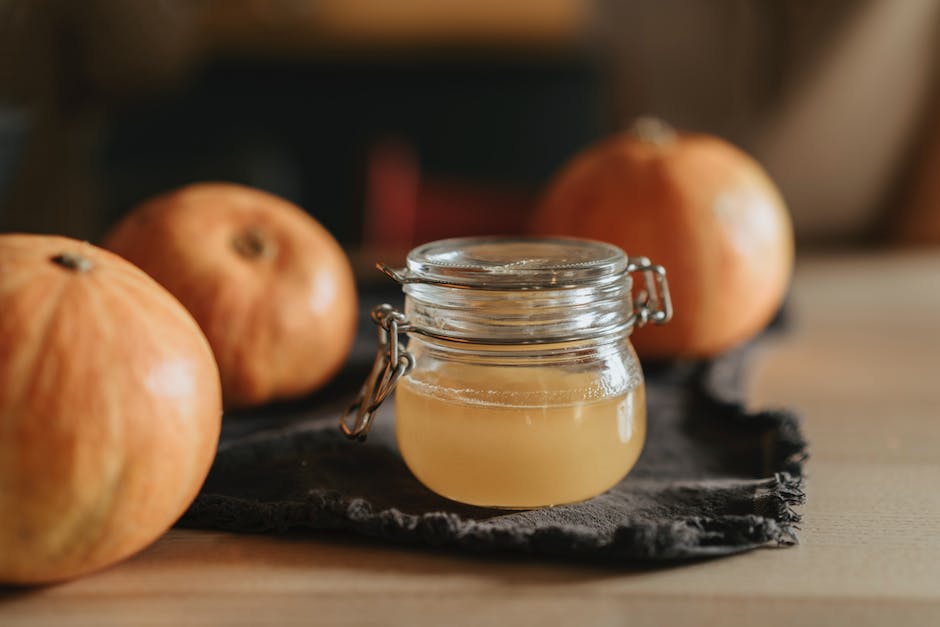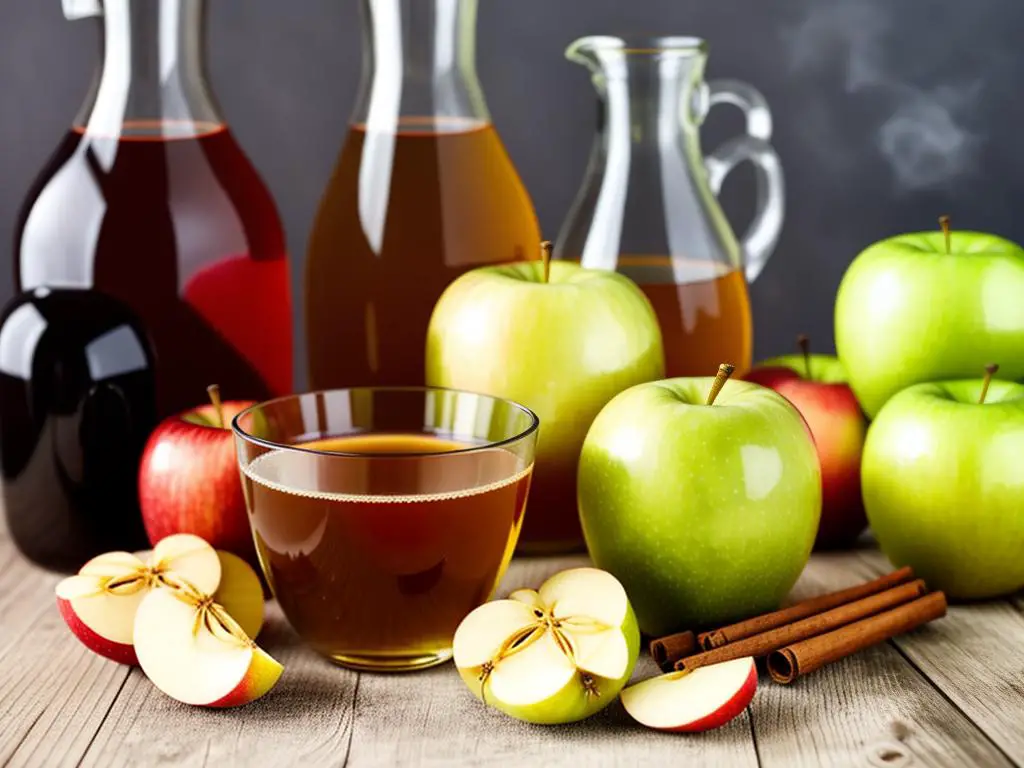Apple cider vinegar, known for its tangy taste and numerous health benefits, is a versatile ingredient used in food preparation and natural remedies. The adventure of crafting homemade apple cider vinegar can be as exciting as its usage! However, one of the crucial extensions to this experience is learning the correct methods to store this valuable product. The longevity and the quality of the vinegar are greatly influenced by the way it’s stored. As we embark on this journey, let us delve into the intrinsic properties of apple cider vinegar. We will explore how it reacts to varied environmental conditions, the preparation strategies for storage, and effective, long-term storage strategies, ensuring you enjoy your homemade apple cider vinegar in the best possible way.
Understanding Apple Cider Vinegar and Its Properties
Understanding Apple Cider Vinegar: A Natural Marvel and Home Kitchen Staple
Apple Cider Vinegar, often abbreviated as ACV, is a beloved natural elixir that has been gracing homestead pantry shelves for generations. Made from fermented apple juice, ACV boasts an array of health benefits and culinary uses, making it ideal for enthusiasts or hobbyists seeking to incorporate more natural produce into their routine.
The process of creating apple cider vinegar begins with the fermentation of apples, whereby the sugars are broken down by yeast and bacteria, first into alcohol, then to vinegar. This change occurs through two main stages, alcoholic fermentation and acidic fermentation. The result is a liquid that is high in acetic acid, the component that gives vinegar its tangy tart flavor and pungent aroma.
The Intriguing Dynamics of Apple Cider Vinegar
Understanding ACV’s properties can further allow you to best store and utilize this versatile ingredient. Key to cider vinegar’s potency are the “Mother of vinegar” elements—these are strands of proteins, enzymes, and beneficial bacteria that give unfiltered apple cider vinegar its cloudy and somewhat cobweb-like appearance.
These elements are crucial in the preservation and enhancement of apple cider vinegar’s health benefits, as they show it’s a high-quality, unrefined product. The “mother” can produce cellulose which, combined with oxygen, generates new molecules needed for fermentation, allowing your apple cider vinegar to mature and develop over time.
Factors that Affect Apple Cider Vinegar’s Shelf Life
Due to its acidic nature, apple cider vinegar boasts an impressive shelf life. However, certain factors can influence its longevity. To be precise, the exposure to light, heat, and air can cause apple cider vinegar to lose its vibrant flavor and beneficial properties.
It is crucial to store your ACV in a cool, dark place away from direct sunlight. Wipe down the bottle cap after each use to prevent bacteria or yeast formation and ensure the lid is properly sealed to block out any oxygen.
In a nutshell, when properly understood and stored, apple cider vinegar can be a lifelong companion in your kitchen, offering culinary utility and numerous health benefits. As an enthusiast or hobbyist, taking the time to comprehend the nature and properties of ACV potentially enables you to maximize its use and appreciate the fine art of homemade vinegar production.

Preparation for Storage
Preserving the Fruits of Your Labor: Storing Homemade Apple Cider Vinegar
When it comes to extending the shelf-life of your homemade apple cider vinegar and preserving its rich flavors, proper storage plays a vital role. By implementing a few key steps, you can guarantee that your DIY apple cider vinegar maintains its quality for an extended period. These steps include cooling, straining, and utilizing appropriate storage containers. Follow this guide for the best results.
The Cooling Process
Once your apple cider vinegar has undergone the fermentation process, allowing it to cool is your next move. Be sure to let your vinegar cool naturally. Hastening the process could potentially interfere with the vinegar’s quality and taste. After it’s cooled completely, the vinegar is more stable and easier to handle safely.
Strain Out Unwanted Particles
Your homemade apple cider vinegar might contain some sediment or particles from the fermentation process. To achieve a cleaner, smoother vinegar, straining is necessary. Use a cheesecloth or fine mesh sieve over a large bowl or pot. Pour the vinegar into the cloth or sieve and allow it to filter through, leaving the larger particles behind. Discard these particles. Straining not only improves the appearance of your vinegar but also prevents any off-flavors that these particles might cause over time.
Use Airtight Containers
Arguably the most critical step in storing apple cider vinegar is ensuring the use of airtight containers. Oxygen exposure can dramatically change the vinegar’s taste and can also lead to spoilage over time. Glass containers are generally the best option for storing vinegar, as they’re non-reactive. Avoid using containers with metallic lids, as vinegar corrodes metal over time.
Ensure you clean and sterilize your containers before pouring in your cooled and strained vinegar. Lidded mason jars or glass bottles with rubber seals are excellent choices. Close your container tightly to maintain the freshness of your apple cider vinegar.
Final Thoughts
Storing your homemade apple cider vinegar using these steps can preserve its delicious flavor and integrity for months. Be sure to keep your stored vinegar in a cool, dry place, out of direct sunlight. By ensuring it’s properly cooled, strained, and stored in an airtight container, you’ll be able to enjoy the fruits of your labor for a much more extended period. Remember, when it comes to vinegar, quality storage equals quality flavor.

Long-term Storage Strategies
An Introduction to Storing Homemade Apple Cider Vinegar
Making your own apple cider vinegar at home is an exciting and rewarding process, and storing it properly for long-term use is just as important as the initial work. Proper storage of your homemade apple cider vinegar not only ensures longevity but also retains its unique and flavorful characteristics. Here are some strategies to help you store your vinegar well and maintain its quality over time.
Understanding Optimal Storage Conditions
One of the first things to understand when storing homemade apple cider vinegar is the importance of optimal storage conditions. Apple cider vinegar is best stored in a cool and dark place. Direct sunlight or high temperatures can cause vinegar to degrade or lose its quality over time.
Your kitchen cabinet, pantry or cellar make an ideal storage location, provided they are dry and away from direct heat or sunlight. However, once you open your vinegar, refrigerating it can help maintain its freshness for a longer period.
The container you use to store your apple cider vinegar is as crucial as the location. Glass containers are most suitable for storing vinegar since they don’t react with the acid in vinegar. It’s advisable to choose dark glass containers, which can further protect it from light exposure.
Potential Risks and How to Handle Them
Improper storage of apple cider vinegar can lead to a range of issues and potential risks. Storing vinegar in metallic or plastic containers can cause reactions with the vinegar’s acidity, altering its flavor and possibly producing harmful substances. Exposure to heat or sunlight could also result in the vinegar losing some of its acidity, making it less effective.
It’s worth noting that while a change in color or the development of sediment, often referred to as the ‘mother’ is completely safe and a normal part of the fermentation process. This sediment is composed of acetic acid bacteria and cellulose, which are harmless.
It’s also important to handle your vinegar properly when using it. Always use clean utensils when pouring vinegar to prevent contamination.
Signs of Vinegar Going Bad
While homemade apple cider vinegar has a significantly long shelf life, it can still go bad if improperly stored. Signs that your vinegar has gone bad include a strong off smell, visible mold in the container or if your vinegar loses its acidity.
However, slight changes in color, clarity, or the formation of sediment in your vinegar are not signs of spoilage, but are natural occurrences over time.
To conclude, by understanding the optimal storage conditions and being aware of potential risks, you can help ensure that your homemade apple cider vinegar is well-preserved. Following these storage strategies will assure that your vinegar maintains its quality, taste, and health benefits over the long term and that you enjoy your apple cider vinegar to the fullest.

The essence of crafting homemade apple cider vinegar does not end in its production, but is carried forward to its preservation. Armed with the knowledge of its intrinsic properties, the required preparation process and effective storage strategies, you are now ready to maintain the optimum quality of your vinegar. Recognize the signs of the vinegar going bad, steer clear of potential risks and maintain the vinegar in the right conditions to ensure its longevity. Remember, the right care and handling measures will only prolong the shelf life of your homemade apple cider vinegar, allowing you to relish its tanginess and reap its health benefits for a longer period of time.
